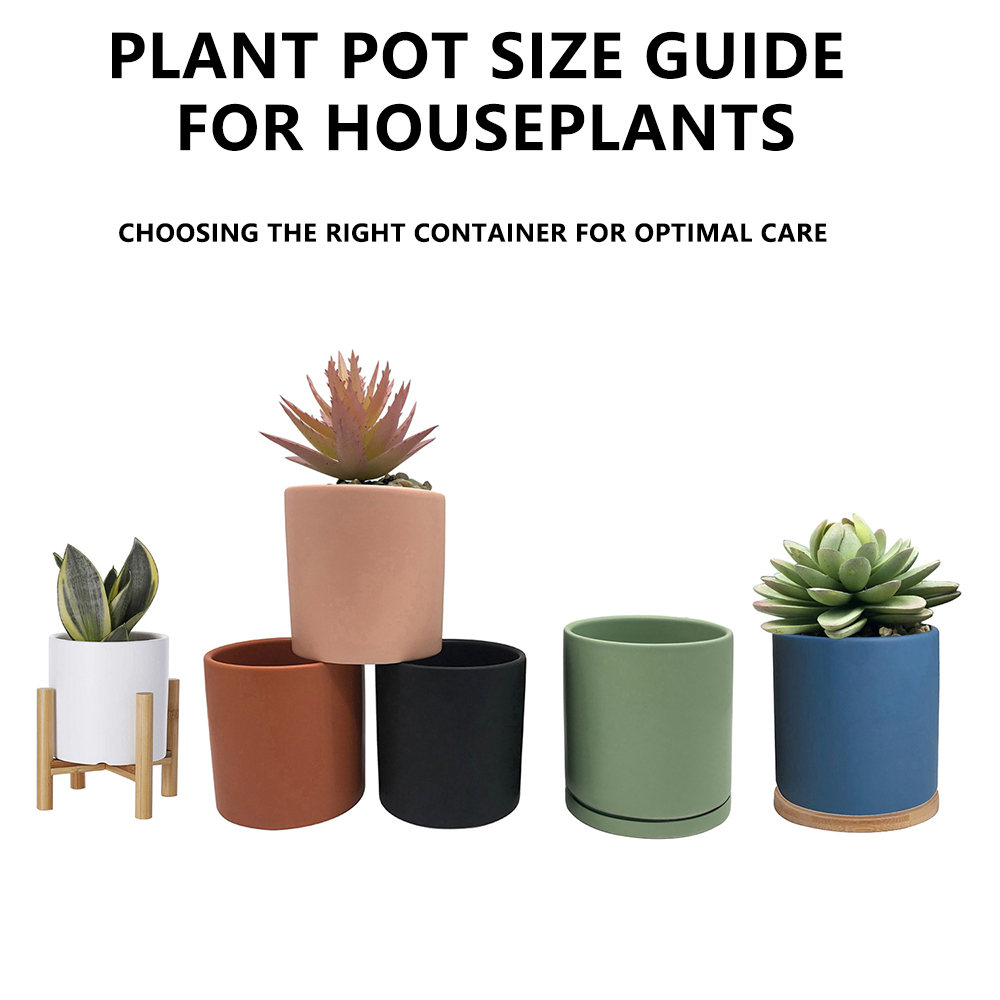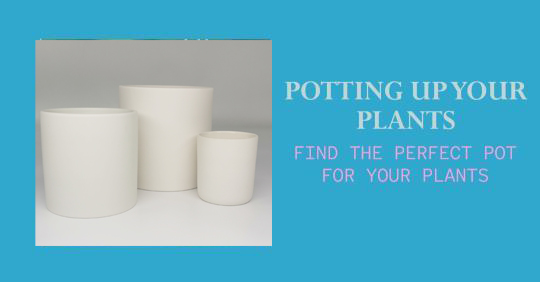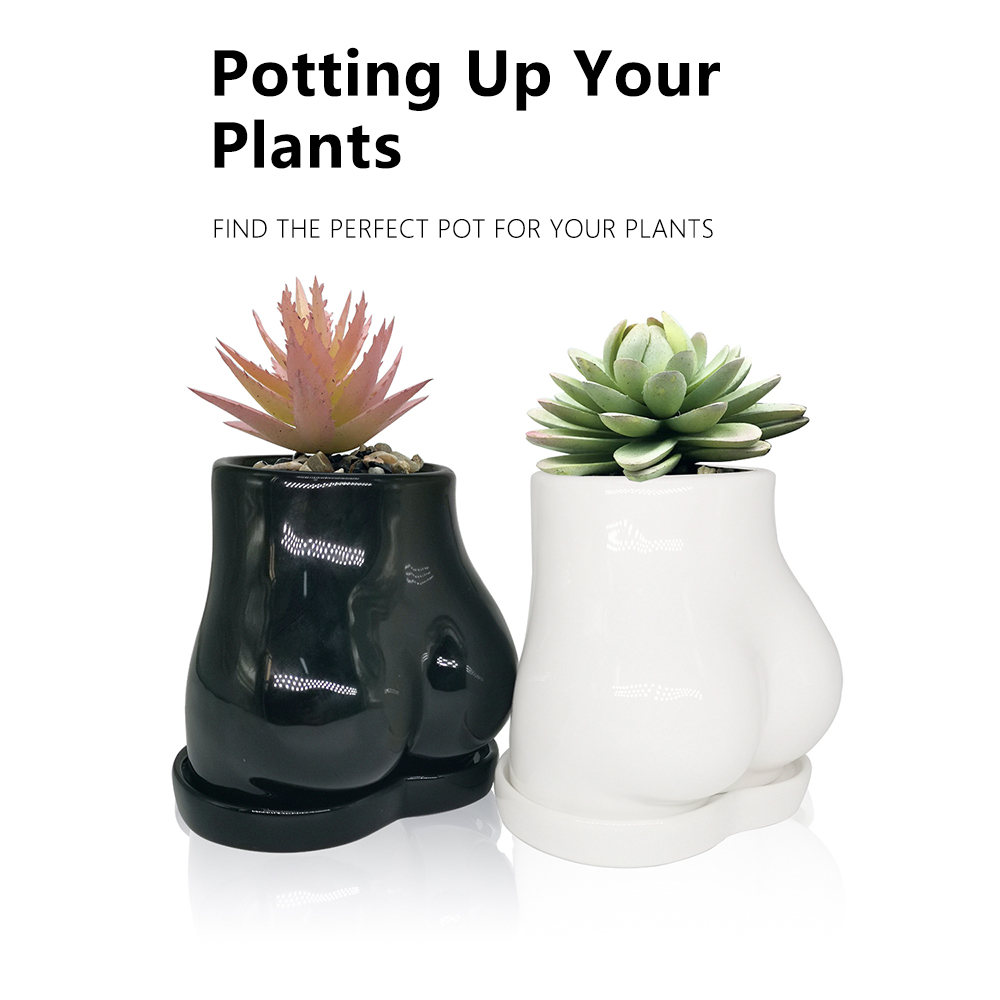Plant Pot Size Guide For Houseplants : Global Reach Ceramic
Time of issue: 2024-04-29 09:54:12
Choosing a pot that is just the right size is crucial to the health and development of your plants. Consider the current and projected sizes of your plant before making a final decision on a container.
How happy and healthy your Plant pot size end up being is directly related to the size of the containers you use. You can avoid problems like root-bound plants and give the roots room to expand by picking the correct size. In order to prevent waterlogging and ensure proper drainage, it is important to choose the correct size container. In this way, you can be certain that your plants are receiving optimal care.
If you want your houseplants or outdoor plants to look good and thrive for a long time, you need to make sure you get the right size container. When you're deciding on the perfect pot size for your green pals, keep in mind to consider both their current size and how quickly they grow.
Importance Of Plant Pot Sizing
If you want your plants to flourish, you must make certain that you can provide them with the appropriate containers. In terms of the well-being of your green companions, the size of the pot is of the utmost importance. When you make sure that the pot is the appropriate size, it has an effect on the drainage and root systems, which in turn has an effect on the vigour and lifetime of the plants. First things first, let's discuss the significance of selecting the appropriate size container for your plants.
Choosing The Right Size For Healthy Growth
When selecting a container for your plants, it is of the utmost importance to make certain that the roots have adequate room to grow. There is a correlation between the size of the plant's container and the root system's overall health and development. Insufficient room can lead to root constriction and reduced nutrient absorption, both of which are indications of stunted growth resulting from the lack of space.
Impact On Drainage And Root Systems
The proportions of the drainage system are directly proportional to the size of the plant container. It is possible for a plant to get root rot if it is placed in a container that is too large for its requirements. This can be caused by the presence of damp soil. On the other hand, roots could potentially become suffocated if water is allowed to accumulate in a small pot that does not contain drainage holes.
Types Of Plant Pots

When selecting the suitable size of plant pot, it is essential to take into consideration the numerous variants of plant containers that are now on the market. When you are aware of the characteristics that should be included in a container, you will be able to choose the ideal container for your plants.
Let's have a look at the different types of plant containers, the materials that are typically used, and the factors that are important to keep in mind for each.
Common Materials Used
Plant pots are available in various materials, each with its own advantages and considerations. The common materials used for plant pots include:
- Terracotta: Known for its porous nature, which allows air and moisture to pass through the pot. It's suitable for plants that prefer drier soil.
- Plastic: Lightweight and affordable, plastic pots are easy to transport and come in a wide range of sizes and colors.
- Ceramic: These pots are durable and retain moisture well, making them suitable for plants that require consistent watering.
- Wood: Offers a natural, rustic look and can provide insulation to plant roots. However, they may deteriorate over time and require maintenance.
- Metal: Often used for decorative purposes, metal pots can conduct heat, so they are best for plants that don't mind warmer soil.
Considerations For Different Plant Types
When selecting plant pots, it's important to consider the specific needs of different plant types. Here are some key considerations for various plant categories:
| Plant Type | Considerations for Plant Pot Sizing |
| Flowering Plants | Opt for larger pots to accommodate extensive root systems and promote healthy growth and blooming. |
| Succulents and Cacti | Choose well-draining pots to prevent waterlogging and ensure proper soil aeration. |
| Herbs | Consider smaller, shallow pots with good drainage for herbs with shallow root systems. |
| Vegetables | Select larger pots to provide ample space for root development and ensure adequate nutrient uptake. |
How To Measure Plant Pots
How to measure plant pots: Measuring plant pots accurately is essential for the health and growth of your plants. It ensures they have the right space for their roots and sufficient drainage. Understanding the proper sizing can help prevent issues such as root rot and over-watering.
Matching Pot Size To Plant Size
Consider the size of the plant's root system when choosing a pot. Aim to select a pot that is 2 inches larger in diameter to allow room for growth. Overly small pots can restrict root development and cause stunted growth.
Understanding Drainage Needs
Proper drainage is crucial for plant health. Make sure pots have drainage holes to prevent waterlogging. Use a saucer underneath to catch excess water and avoid root rot.
Effects Of Improper Sizing
Improper plant pot sizing can hinder plant growth, leading to root-bound roots and water stagnation. Inadequate sizing limits airflow, causes water accumulation, and restrains plant development. Choose pots that fit the plant size to ensure healthy growth.
Root Bound Plants
One of the most common effects of improper sizing when it comes to plant pots is root binding. When a plant outgrows its pot and its roots become too crowded, they start to circle within the pot, unable to spread out and grow freely. This can lead to various issues for the plant's overall health and growth.
Root bound plants may experience stunted growth and reduced nutrient absorption, as their tightly packed roots struggle to take in water and nutrients efficiently. This can result in weaker plants that are more susceptible to disease and pests.
Additionally, root bound plants may have difficulty accessing oxygen, as the tightly packed roots limit airflow. Lack of oxygen can hinder root development and impair the plant's ability to take up water and nutrients from the soil.
To determine if a plant is root bound, you can carefully remove it from its pot and examine the root system. If the roots appear tightly packed, circling around the pot, or growing out of the drainage holes, it's a clear indication that the plant needs to be repotted into a larger container.
Waterlogging Issues
Another consequence of improper pot sizing is waterlogging, which occurs when excess water accumulates at the bottom of the pot with no way to drain properly. This can be detrimental to plant health as it leads to oxygen deprivation and root rot.
When a pot is too large for the plant, excess soil holds onto water, preventing it from evaporating or draining away effectively. The soil becomes waterlogged, causing the roots to suffocate and eventually rot. This can result in root decay, plant wilting, and overall decline.
Waterlogged plants are more susceptible to fungal and bacterial infections, as the excess moisture creates a favorable environment for these pathogens to thrive. The lack of oxygen in waterlogged soil further weakens the plant, making it more susceptible to disease and pest infestation.
To prevent waterlogging, it's crucial to choose a pot that matches the size of the plant, allowing for proper drainage and airflow. Proper drainage holes in the pot are also essential to facilitate the movement of excess water out of the container.
Repotting Strategies
Repotting is essential for the health of your plants. Know Signs It's Time to Repot and master Proper Repotting Techniques.
Signs It's Time To Repot
- Roots emerging from drainage holes
- Stagnant growth or yellowing leaves
- Pot becoming root-bound
- Soil drying out quickly or retaining too much water
Proper Repotting Techniques
- Choose a pot 1-2 sizes larger than current one
- Gently loosen root ball and trim any rotting roots
- Add fresh potting mix to new pot
- Place plant in center, fill gaps with soil
- Water thoroughly and place in adequate sunlight
Creative Plant Pot Ideas
Liven up your space with these Creative Plant Pot Ideas! When it comes to adding some freshness to your home or garden, plant pots are a simple and effective way to do so. While traditional ceramic or plastic containers are commonly used, there is a world of unconventional containers waiting to be utilized. From repurposed household items to unique DIY projects, you can give your plants a stylish and unique home. In this article, we will explore some innovative ideas to transform your plant pots and breathe new life into your botanical collection.
Utilizing Unconventional Containers
Think outside the box with these unconventional container ideas:
- Repurpose vintage tin cans as plant pots for a retro touch to your decor.
- Transform old wooden crates into rustic plant holders for a farmhouse-inspired look.
- Bring nature indoors by using hollowed-out tree stumps or logs as natural planters.
- Create a whimsical atmosphere by repurposing teapots or vintage suitcases as unique plant pots.
By utilizing unconventional containers, you can add a touch of personality and charm to your plant display, making it a conversation starter in any gathering.
Diy Potting Projects
Get your creative juices flowing with these exciting DIY potting projects:
- Painted Terracotta Pots: Add a pop of color to your outdoor space by painting plain terracotta pots with vibrant geometric patterns or floral designs.
- Mosaic Plant Pots: Give your plants a mosaic makeover by adhering colorful glass tiles or broken ceramic pieces onto plain pots for a dazzling effect.
- Macrame Plant Hangers: Craft your own macrame plant hangers using ropes or yarns, customizing the length and design to suit your space.
- Vertical Wall Planters: Utilize your vertical space by constructing a wall-mounted planter using recycled pallets or wooden planks, perfect for small gardens or apartment balconies.
With these fantastic DIY potting projects, you can showcase your artistic flair while giving your plants a unique and personalized home.
Maintenance Tips For Plant Pots

Maintenance Tips for Plant Pots Plant pot maintenance is essential for the health and vitality of your plants.
Here are some steps to clean and sterilize your plant pots:
1. Remove any remaining soil from the pot.
2. Wash the pots with a mild soap and water solution.
3. Sterilize the pots by soaking them in a 1:10 bleach and water solution for 10 minutes.
4. Rinse the pots thoroughly with clean water and allow them to air dry before reusing. Seasonal Care Recommendations It is important to adjust your plant pot care according to the changing seasons.
Choosing The Right Potting Mix
When it comes to plant pot sizing, choosing the right potting mix is crucial for the health and success of your plants. The potting mix provides essential nutrients, aeration, and moisture retention, creating an optimal environment for growth. Understanding the components of different potting mixes and matching them to your plant's specific needs is essential for ensuring healthy and thriving plants.
Understanding Different Mix Components
Before selecting a potting mix, it's important to understand the various components commonly found in them. Different mixes may contain a combination of peat moss, perlite, vermiculite, compost, and other organic materials. Peat moss, a primary ingredient, provides moisture retention and aeration, while perlite and vermiculite contribute to drainage and airflow. Compost enriches the mix with nutrients, promoting plant growth.
Matching Mix To Plant Needs
Each plant has specific requirements for moisture, nutrient levels, and aeration. It's essential to match the potting mix to these needs to ensure optimal growth. For example, succulents and cacti thrive in well-draining, sandy mixes, while tropical plants may require a richer, moisture-retaining mix with higher organic content. Understanding your plant's specific needs will guide you in selecting the appropriate potting mix.
Final Word
Selecting the right size plant pot is crucial for your plant's health and growth. Remember to consider drainage, root space, and future growth. With these tips, you can ensure your plant thrives in its new home.
Happy gardening and may your green thumb flourish!
Frequently Asked Questions
Question: How Do I Know What Size Pot To Get For My Plant?
Answer:Choose a pot that is 1-2 inches larger in diameter than the current one. Ensure it has drainage holes, and consider the plant's growth rate. A pot with sufficient room for roots promotes healthy growth.
Question:Should A Pot Be Bigger Than The Plant?
Answer:Yes, the pot should be slightly bigger than the plant to allow for growth and proper root development.
Question:What Is The Ratio Of Plant Height To Pot Size?
Answer:The ratio of plant height to pot size varies depending on the plant species. Generally, the pot should be about one-third the height of the plant. Matching the pot size to the plant's growth needs is crucial for healthy development and proper root system support.
Question:How Much Space Does A Plant Need In A Pot Size?
Answer: A plant requires enough space in a pot for its roots to grow and spread. The pot size should be large enough to accommodate the root system comfortably.
RECENT POSTS
- Your Guide to Beautiful and Durable Ceramic Pitchers
2025-06-05
- Upgrade Your Space with Handcrafted Ceramic Coasters
2025-06-05
- Where Can I Buy a Jewelry Box? Your Guide to the Best Picks
2025-05-12
- How to Use a Tea Light Oil Burner for Ultimate Aromatherapy
2025-05-12
- Should You Refrigerate Olive Oil? Truth You Need To Know!
2025-04-18
- What Is The Standard Salad Plate Size? Find The Best Fit
2025-04-18
- Best Types Of Pots From Spain That Tell A Beautiful Story
2025-03-31
- 5 Best Small Jewellery Boxes You’ll Love to Display
2025-03-31









